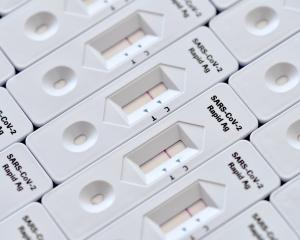A call to make domestic violence a stand-alone criminal offence provides a much-needed avenue for discussion about a problem still sadly prevalent.
Departing Principal Family Court Judge Peter Boshier, who is beginning a term with the Law Commission, believes a separate charge of domestic violence would provide a more accurate gauge of the extent of the problem in New Zealand and provide a wider context for judges considering the criminal backgrounds of people appearing in court.
"We all know that family violence is a huge problem, but we don't know just how much of a huge problem it is," Judge Boshier said in his final speech at the Women's Refuge conference in Blenheim recently.
The call follows others made in March, during a trip to Queenstown, including significant changes around protection orders.
One of the difficulties calculating the extent of domestic violence is police estimate only 18% of cases are reported. Women's Refuge figures show almost 25,000 women and children needed its help last year, and refuges provided safe beds to an average of 230 women and children each night. The refuge receives more than 60,000 calls to its Crisisline every year.
Judge Boshier said his proposal to create a stand-alone law for domestic violence was just a small part of addressing the problem, and New Zealanders needed to look at their "tacit acceptance of family violence as less important than other forms of violence" and their willingness to resort to domestic violence so readily.
"Family violence has all sorts of risks that other forms of violence don't have. Nearly 50% of homicides in this country have a genesis in family violence."
Justice Minister Judith Collins said she would consider the option, but her immediate concern was "whether it would downgrade violence in a family to a lesser offence than the various charges relating to violence outside the home".
A police report released in September challenges some of the gender perceptions around family violence. The Family Violence Death Review found mothers were responsible for 45% of the child deaths subject to a family violence death review from 2004 to 2011.
The report, which only involved deaths that were subject to a family violence death review, found victims of family violence were spread almost equally among men, women and children.
It also found 81% of female victims and 29% of male victims were killed by a former or current spouse or partner, 64% of all deaths were in families where police had prior involvement, and in 55% of child deaths police had prior involvement with the family. Most suspects or offenders were in their 20s.
Family First national director Bob McCoskrie said the statistics debunked the misleading popular perception "that women and children need to be protected from men".
"If we're really serious about reducing family violence, we need to talk about ... our violent culture and the role alcohol and drugs play in fuelling this environment." Prof David Fergusson, of the University of Otago, said the public perception men were the perpetrators of most domestic violence was the result of biased publicity.
"The proper message is that both gender groups have a capacity for domestic violence - women probably perpetrate more assaults on children then men do." Prof Fergusson said the bottom line was "the importance of public policy being based on evidence".
There should be no argument there, but it is debatable whether such evidence - through more accurate statistics on the problem - will actually help solve the problem, particularly given the issue is complex, often involving intergenerational, ingrained and learned behaviours and a cocktail of social and environmental factors.
And, of course, statistics are only based on what incidents are reported to police and other agencies; the size of the iceberg beneath the surface can only be guessed at.
Judge Boshier is right when he says a separate charge for domestic violence is only one piece in a bigger puzzle - and Ms Collins is implementing several changes targeting that puzzle. But if the judge's particular piece is a key towards making progress on reducing the problem, it is to be hoped Ms Collins pays more than lip service to its consideration.












